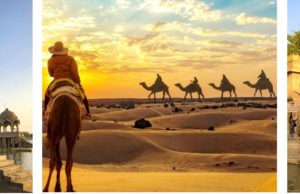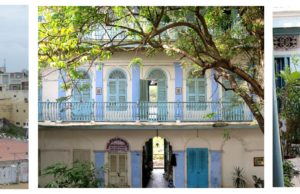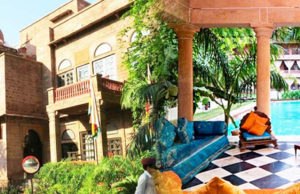
WoT's Hot
Red ant pickle? Well that is what a drive through Bastar can entail – an experience that’s unexpected, offbeat and remarkably down to earth. Ever since the state of Chhattisgarh was created out of the tribal-ends of Madhya Pradesh, it’s been astonishing travelers with a host of wild adventures. Chhattisgarh they say is where the gods come to let their hair down. And with good reason, red ants and all.
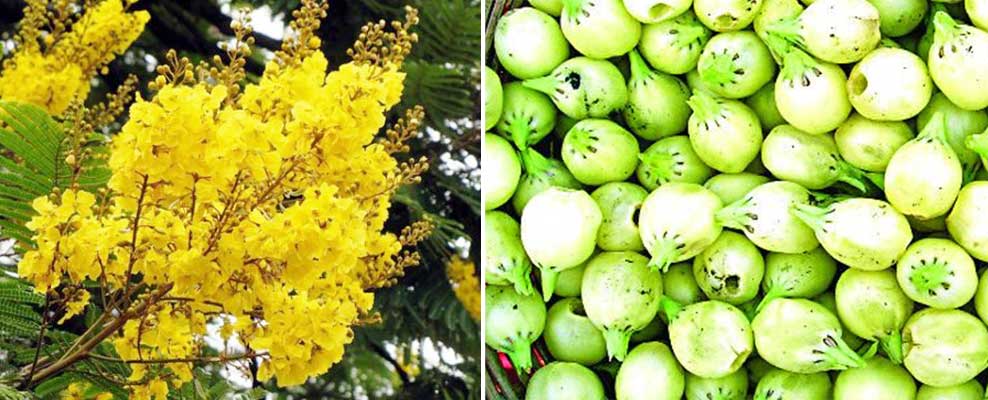
Start your Chhattisgarh experience by driving down from the state capital Raipur. There’s a lean- mean highway which will zip you down to Jagdalpur in just about four hours. In late spring the road is lined with flaming Palash trees (Flame of the forest) and yellow Gul Mohurs. You’ll pass shady groves of mangoes, bamboos and sal – Bastar is in fact the place where India’s finest sal forests are to be found, interspersed with unusual rock formations that look like tribal totems weathered deep in time.
On the way you’ll find little weekly haats (markets) which compete with the trees for color and variety. Among the scratching squawking livestock, you’ll find that famous red ant ‘chindi’ chutney, along with explosive strings of dried red chilies that burst like fire crackers in your mouth and dried mahua fruit. You’ll also find liquid mahua with a kick worse than the chilies or red ants, so save that for later.
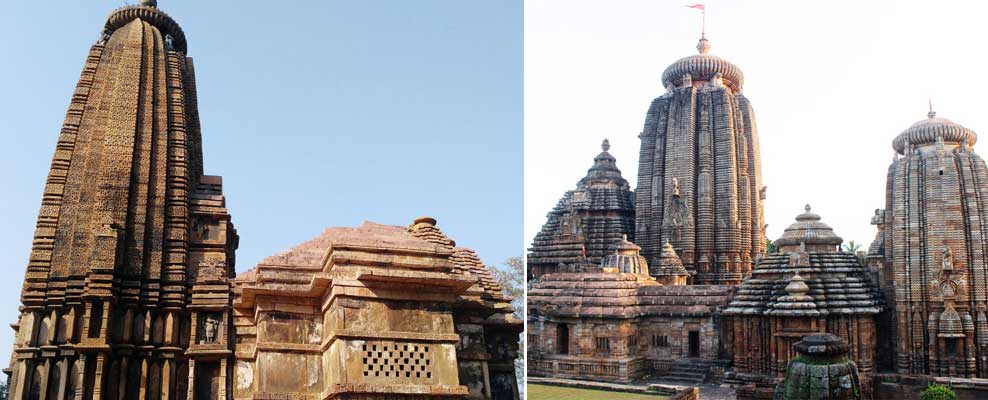
A detour off the NH 43 will bring you to the temple city of Rajim which has its own three rivers joining together in a local version of Allahabad’s Sangam. The Rajiv Lochana Vishnu temples on the upper reaches of the Mahanadi date from the 9th century. Base yourself at Kanker where the erstwhile Maharajadhiraj Aditya Pratap Deo and his brothers run a heritage homestay in a wing of their 1937 palace.
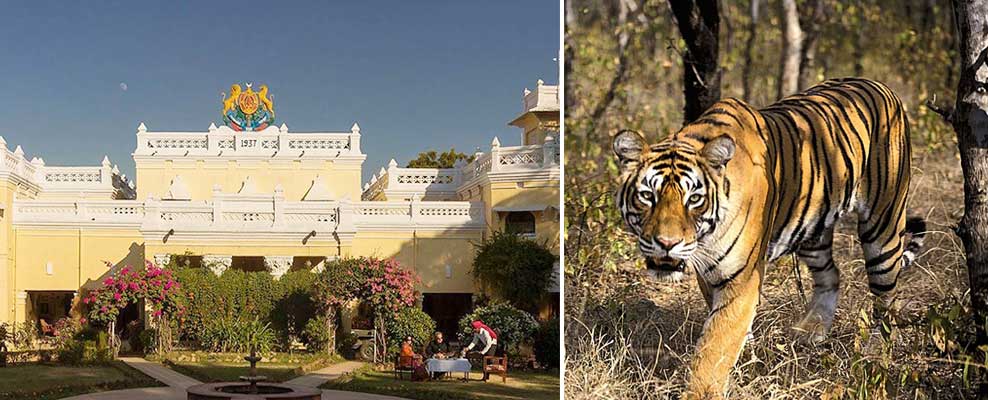
The Kanker Palace hotel is spectacularly located just where Keshkal Ghati climbs up to the Bastar Plateau. From there you can explore Rajim and the tribal city of Narainpur. Anthropologist Verrier Elwin once lived there and the place is now on every collector’s map for the famed bell metal work that it produces. While you’re there you should peep into the ghotul where the young people live, or try to catch one of their dances.
On the second day you’ll reach Jagdalpur, the district capital that was once the capital of the Heiheya kings. While it feels staid, it once dominated an ancient trade route commanding the plains of the north east and Andhra’s ports. If you’re feeling adventurous, stroll down to the south of the city and explore the ruins of the forts that the medieval rulers built.
It’s time for a change of scene. A morning drive out to the Kanger valley where you can lose yourself in emerald green foliage. An hour away from Jagdalpur, Kanger’s a wild life sanctuary where tigers have been known to stalk, though everyone around admits that your chances of seeing one are slim. But even without tigers there’s quite enough to distract you.
Tirathgarh’s amazing waterfall draws people from miles around. The great wave of water cascades over the rocks in seven gigantic leaps, falling into a series of inviting pools below. In the rocks you’ll discover the three ancient caves that the water has hollowed out of the solid rock, Kailash, Kotumsar and Dandak. Limestone formations drip from ceiling to floor and floor to ceiling, strange shapes and pillars like some Lord of the Rings fantasy castle. Turn a corner and you’ll find a shrine in front of an elephant or snake deity that seems to have been frozen in mid writhe. Kotumsar houses the rare blind cave fish that inhabit the deeper pools.
An hour away again is Chitrakoot where the Indravati river tumbles down a 100 foot gorge to join the Godavari in two spectacular cascades. In the monsoons this looks like a miniature Niagara. If you’ve got your swimming gear with you, try the pools at the foot of the falls. The water is crystal clear and, mercifully, uninfested by crocodiles. Local boats will take you out close to the falls and the State Tourism Department runs a small guest house nearby.
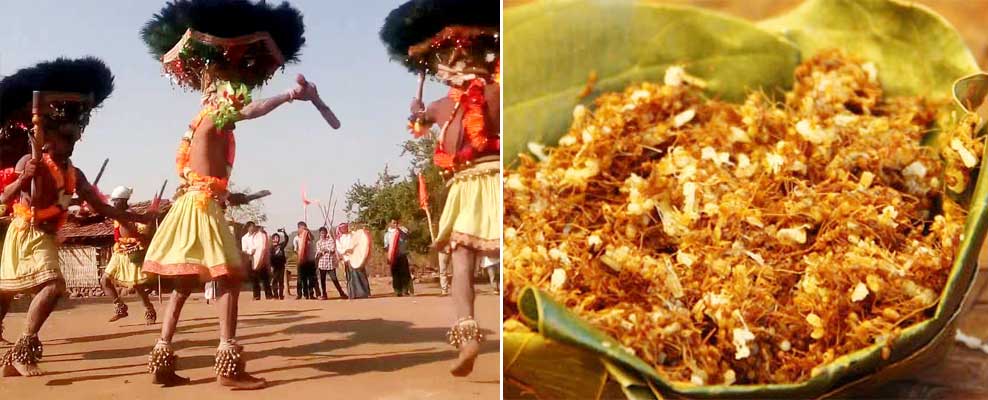
The whole feeling is wild and primeval. You’ll find the Gonds who give the region its name all around, singing, dancing, praying. Liberated Gond women sell Sulfi, a local brew which they tap from one of the trees. A little like toddy, Sulfi, is refreshing at the end of a long hard day, but the longer it’s kept fermenting the more potent it gets. By evening everyone’s swaying to a Sulfi beat, while the stars multiply to amazingly infinite numbers. You can swap red ant chutney recipes with them if you like the trick is to collect the ants in leaf cups and put then into the hot embers of a fire for a few minutes. You take the sizzled ants out and grind them into paste with rice flour and green chilies. Chindi chutney goes very well with the Sulfi.
Save the next day for a visit to the region’s most famous temple, the Danteswari. An hour and half to the south of Jagdalpur, the highway thins into a ribbon road that winds between wild hill tracts. The roadside is dotted with tall menhirs, or what the Gonds call ‘hero stones’ where village elders are buried. At the fork of the Dankini and Shankhini rivers lies the temple dedicated to Durga, in her ancient Mahishasur Mardini form. A triangular building with a sloping roof approached through a colorful main gate arched like the humps of a buffalo.
On your way back to Raipur the next day you could try a detour to the ancient city of Sirpur. It’s reached through the Barnawapara game sanctuary, where you may find curious gaur watching as you drive past. Excavations are still in progress at Sirpur – you can see the pillars of a Buddhist monastery emerging gradually from the red sandstone. The largest building there is the lotus bud Lakshman temple, which is unique because it’s made of brick, not stone unusual in a 6th century temple.
They call Chhattisgarh the secret heart of India. As an experience it’s very different from the usual kind of holiday, a sort of stepping back into a simple and yet far more complex world. A world as sharp and clean as the taste of chindi chutney!
Photo credits: Banner Left: chinkatajourneys.com; Banner Center: indianholiday.com; Banner Right: Sanjeevni Today
Red ant pickle? Well that is what a drive through Bastar can entail – an experience that’s unexpected, offbeat and remarkably down to earth. Ever since the state of Chhattisgarh was created out of the tribal-ends of Madhya Pradesh, it’s been astonishing travelers with a host of wild adventures. Chhattisgarh they say is where the gods come
Other Articles in India
What to read next
Featured articles

Welcome Festive Season in Glam, Latin Quarters Launches new #PujoBling Collection with Monami Ghosh
by WOT






































